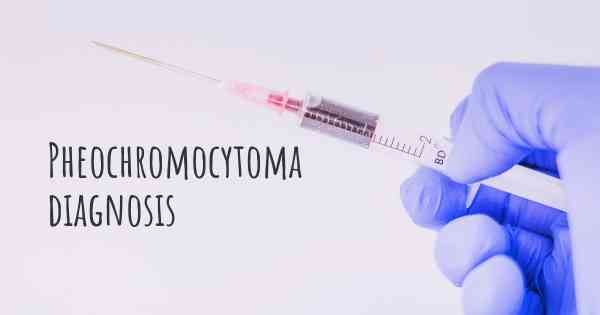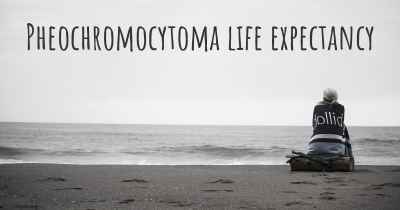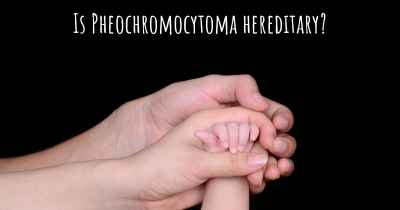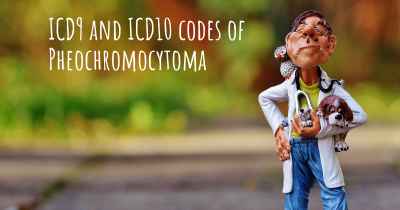How is Pheochromocytoma diagnosed?
See how Pheochromocytoma is diagnosed. Which specialists are essential to meet, what tests are needed and other useful information for the diagnosis of Pheochromocytoma

Diagnosis of Pheochromocytoma
Pheochromocytoma is a rare tumor that develops in the adrenal glands, which are located on top of the kidneys. This tumor produces excessive amounts of adrenaline and noradrenaline, leading to a variety of symptoms. Diagnosing pheochromocytoma can be challenging due to its nonspecific symptoms and intermittent nature. However, there are several key diagnostic tests and procedures that healthcare professionals use to identify and confirm the presence of this condition.
Medical History and Physical Examination
The initial step in diagnosing pheochromocytoma involves taking a detailed medical history and conducting a thorough physical examination. The healthcare provider will inquire about the patient's symptoms, family history, and any previous medical conditions. They will also perform a physical examination to check for signs such as high blood pressure, rapid heart rate, and other characteristic symptoms associated with pheochromocytoma.
Blood and Urine Tests
Measuring the levels of certain hormones and metabolites in the blood and urine is crucial for diagnosing pheochromocytoma. The most important test is the measurement of plasma-free metanephrines, which are breakdown products of adrenaline and noradrenaline. Elevated levels of plasma-free metanephrines are highly suggestive of pheochromocytoma. Additionally, urine tests can be performed to measure metanephrines and catecholamines, which are also elevated in individuals with this condition.
Imaging Studies
Various imaging techniques are employed to locate and visualize the tumor. The most commonly used imaging modality is abdominal computed tomography (CT) scan. CT scans provide detailed cross-sectional images of the abdomen, allowing healthcare professionals to identify the presence, size, and location of the tumor. Another imaging technique that can be used is magnetic resonance imaging (MRI), which uses powerful magnets and radio waves to produce detailed images of the adrenal glands.
Functional Imaging
Functional imaging studies are particularly useful in cases where the tumor is small or difficult to detect. MIBG scintigraphy is a nuclear medicine imaging technique that uses a radioactive substance called metaiodobenzylguanidine (MIBG) to detect pheochromocytomas. MIBG is injected into the patient's bloodstream and is taken up by the tumor cells, allowing them to be visualized using a special camera. Another functional imaging technique is positron emission tomography (PET) scan, which uses a radioactive tracer to identify areas of increased metabolic activity, such as pheochromocytomas.
Genetic Testing
Since pheochromocytoma can be associated with certain genetic conditions, genetic testing may be recommended in some cases. Mutations in genes such as RET, VHL, SDHB, SDHD, and NF1 have been linked to the development of pheochromocytoma. Identifying these genetic mutations can help confirm the diagnosis and guide further management and surveillance for associated conditions.
Provocative Testing
In certain situations, when initial tests are inconclusive, provocative testing may be performed to induce the release of catecholamines and provoke symptoms. This can be done using medications such as clonidine or glucagon, which stimulate the release of adrenaline and noradrenaline. Blood and urine samples are then collected and analyzed for elevated levels of these hormones.
Biopsy
In most cases, a biopsy is not necessary for diagnosing pheochromocytoma. However, if imaging studies are inconclusive or if the tumor is suspected to be malignant, a biopsy may be performed. A small sample of the tumor is obtained and examined under a microscope to determine its nature and confirm the diagnosis.
Conclusion
Diagnosing pheochromocytoma requires a combination of medical history, physical examination, blood and urine tests, imaging studies, genetic testing, and occasionally, provocative testing or biopsy. It is essential to accurately diagnose this condition to initiate appropriate treatment and prevent potential complications. If you suspect you may have pheochromocytoma or are experiencing symptoms associated with this condition, it is important to consult with a healthcare professional for a comprehensive evaluation.
24 hour urine
MIBG and or Pet Scan
Posted May 23, 2017 by Michael 840
Posted Jul 5, 2018 by Twinlins 200
Posted Jul 5, 2018 by Anderson 2550
Posted Jul 5, 2018 by Helen 2500
Posted Jul 6, 2018 by Koka 1000
Blood test
Mri or ct scan
Posted Jul 11, 2018 by Eme lou 3000








